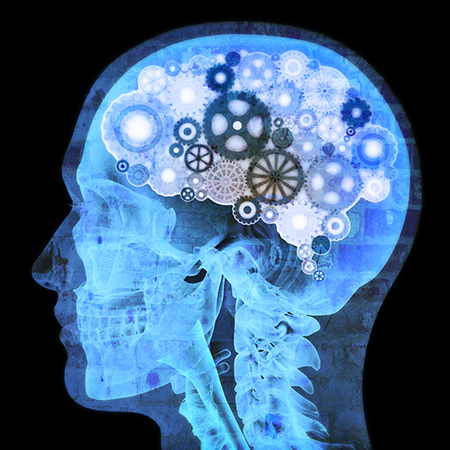In an essay I published last year for the Lasker Essay Contest (and republished in our blog), I described optogenetics and chemogenetics, two technologies recently developed for basic neuroscience research that have the potential to improve the way we treat psychiatric illness. The major drawback to drugs currently prescribed for diseases such as depression, PTSD, and schizophrenia is that they lack precision; although they improve a deficiency in the brain’s activity, they also cause off-target effects throughout the nervous system.
The two technologies, optogenetics and chemogenetics, allow scientists to manipulate the activity of a spatially and genetically defined population of cells in the brain without affecting other areas. With this advance, we have the potential to develop drugs that improve symptoms of psychiatric illness without causing debilitating side effects.
Non-invasive Treatment Approaches to Targeting Disease
Chemogenetics is an especially compelling approach because, after an initial surgery, it requires no invasive procedures. The technology works by putting specially designed receptors into a chosen cell population in the brain. The receptors are delivered by injecting a special virus into the target brain region (this is the spatial restriction). The virus is genetically modified so that it contains instructions to produce the receptor. The instruction will work only in certain cell types (this is the genetic restriction). Some well-known groups of cells that can be targeted in this fashion and are implicated in psychiatric illness include the dopamine-producing cells of the substantia nigra and the serotonin-producing cells of the raphe nuclei. Once the cells contain the genetic information to produce the receptors, their activity can be modulated at any time by giving the subject the specific molecule that activates the specific receptors. So, a patient with receptors inserted into dopamine cells could activate them at a later point by simply taking a pill with that molecule.
Designer Receptors Exclusively Activated by Designer Drugs ( or DREADDs) are the most popular version of chemogenetics. DREADDs were created by altering existing cell membrane receptors so that they respond to clozapine N-oxide (CNO). CNO is an inert compound in mammals, so it has no off-target effects beyond activating the DREADDs. Many researchers have used DREADDs to manipulate specific populations of cells in rodents with profound effects: increasing and decreasing feeding, improving Parkinson’s-like movement impairment, and blocking fearful memories. Results like these encourage the use of DREADDs in human clinical trials to address similar symptoms.
Surprisingly, a recent study by researchers at the National Institutes of Health’s National Institute on Drug Abuse and Johns Hopkins revealed that DREADDs do not function exactly as advertised. Although CNO does activate the designer receptor when applied directly to the receptor, it is unable to pass the blood-brain barrier. That means that even if CNO gets into the bloodstream, it is unable to pass into the brain and reach the target receptors.
If CNO is not reaching the brain, how can we explain all of the promising results achieved using DREADDs? It turns out that, in rodents, a small amount of the CNO metabolizes into clozapine. You may recognize clozapine as an antipsychotic drug used to treat schizophrenia. Clozapine can cross the blood-brain barrier, and it binds to DREADDs exceptionally well. Thus, in the studies that showed effects using DREADDs, the CNO likely converted to clozapine, which traveled into the brain and activated the DREADDs.
DREADDS Progress Towards Clinical Trials
What are the implications of this finding? In most experiments to date using DREADDs, researchers ran a control group of subjects that do not have DREADDs but received the same dosage of CNO. As long as the experimental effect was seen in the DREADD group but not the CNO-only control group, the findings are still valid. Now, some experimenters are using small doses of clozapine in place of CNO for their studies. Fortunately, the amount of clozapine that reaches the brain is small enough that its antipsychotic effects are unseen.
In terms of basic research, this finding highlights the importance of using proper controls, especially when employing new technologies. Clinically, it may mean that DREADDs are a little further from patient trials than previously suggested. Because clozapine is an antipsychotic drug with considerable side effects, it is an unattractive molecule to use to activate DREADDs in humans. Nevertheless, as we look for alternative DREADD ligands, we now know how to properly evaluate how they function in a living animal, which will ultimately increase the likelihood of success when DREADDs eventually move to clinical trial.

I am thinking that this makes total sense... I would like to try the trials.. My nephew is on clozapine and I understand that you you have to be blood work monitored carefully
Comments are closed.